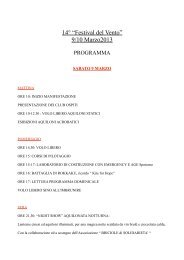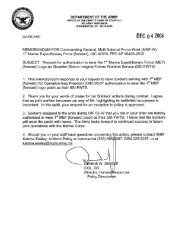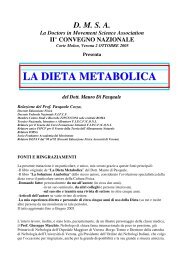Science vs. religion : what scientists really think - File PDF
Science vs. religion : what scientists really think - File PDF
Science vs. religion : what scientists really think - File PDF
Create successful ePaper yourself
Turn your PDF publications into a flip-book with our unique Google optimized e-Paper software.
40Crossing the Picket Lines: The Personal Faith of Scientistsin understanding human disease. He was clear to point out that being a personof faith in no way compels him to accept creationism, which he called a“conservative approach.” Rather, his faith has an influence by making himinterested in doing work that “has a positive impact on people around [him].”He told me that it is “very clear that sort of sense comes out of [my] religiousbackground and upbringing.”Like many of his believing peers, Tobin, the economist introduced at thebeginning of this chapter, also said that his faith entered his work by directingthe kinds of research topics he chooses and the ways he <strong>think</strong>s about theirinfluence on the broader public (though not the methods for his science). Atthe beginning of a project, his faith framework helps him decide <strong>what</strong> issues toconsider. For example, Tobin attributed his interest in doing work that “benefitsunderprivileged children” to his Catholic faith. After the research topic hasbeen chosen, he said, being an economist takes over, and it is a little like beinga surgeon. Once you start cutting, it does not matter whether you are religiousor nonreligious. The only important thing to the person lying on the table isthat you are good at your job. But once Tobin has the data from his studies,being a person of faith starts to make a real difference again, this time on “thepolicy recommendations [he makes] based on the data.” His perspective as aCatholic compels him to look beyond <strong>what</strong> he sees as the “narrow calculations”of other economists and to <strong>think</strong> more broadly about how the results of hisstudies could be used to truly improve the welfare of children.A FAITH AT ODDS WITH THE FAITHCOMMUNITY: “DOES THIS GRILLED CHEESESANDWICH REALLY LOOK LIKE JESUS?”Like many people, religious <strong>scientists</strong> sometimes create boundaries betweenthemselves and those in their labs and departments who are not people of faith.The boundaries can manifest in various ways and might indicate differences inbeliefs, priorities, or <strong>what</strong> is considered acceptable behavior. They also createboundaries between themselves and the non<strong>scientists</strong> who are part of their ownfaith traditions. A chief line of demarcation for these boundaries is <strong>scientists</strong>’questioning of (and at times even full-blown cynicism about) <strong>what</strong> goes on intheir houses of worship. The biologist 27 just mentioned who grew up in achurch where his mother was the choir director said that his current church isa fairly liberal Presbyterian parish attended by several other biology professors.A group of biologists in the church “got together and gave lectures . . . in church
















